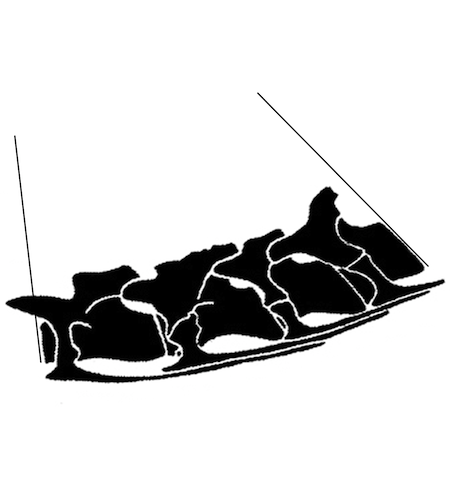| Mamenchisaurus, with 18 cervical vertebrae
(for M. youngi) or even 19 cervicals (for M. hochuanensis), represents an extreme
of neck specialization that surpasses even that of Brachiosaurus and Barosaurus.
The original illustrations (individual lateral views) of the presacral vertebrae of M. youngi (type specimen ZDM0083) were digitally composited to form a complete, articulated presacral series in neutral position. The result is a remarkably straight vertebral series. The scale bar represents 1.0 m; the neck of this specimen is about 6.5 m long). Note that some vertebrae were obviously distorted diagenetically and hence the centrum and articulation of adjacent vertebrae are used for continuity. |
| But a straight neck hanging way out in front just doesn't match with the expectations that some hold regarding these giants. So to fix that, maybe just bend the bones a bit, little by little, and one can depict the neck as if it naturally had a giraffe-like curve. |
 |

|
| There is no osteological evidence to suggest that this sauropod had a giraffe-like neck. The 18th cervical vertebra (above) is not keystone shaped and resembles closely the anteriormost dorsals; the neck had no intrinsic upturn at the base. | How to create a near-vertical neck for this sauropod? This detail from a giraffe-like artistic rendition (shown below) reveals that the vertebrae at the base of the neck were distorted slightly, which accumulate into a steeply upturned neck. |
| Despite the rather prevalent mindset that equates long necks with high browsing, the actual osteology indicates that the neck of Mamenchisaurus was held at or below the horizontal. Indeed the low neural spine height in the dorsal vertebrae suggest very little ability to elevate that extraordinarily long neck other than momentarily. |
 |
Copyright © 2011 Kent A. Stevens, University of Oregon